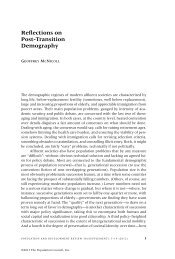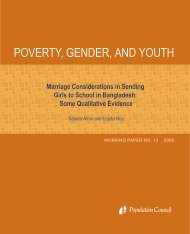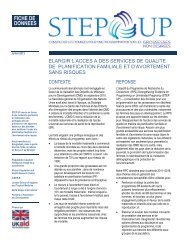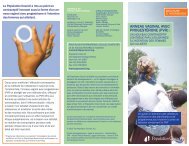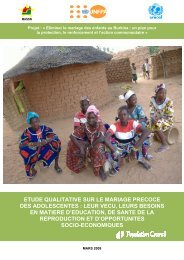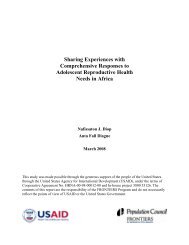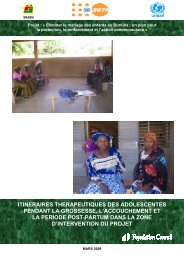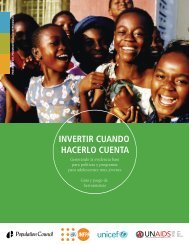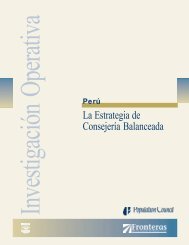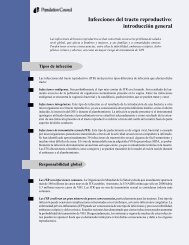Community Health Volunteer's Training Manual - Population Council
Community Health Volunteer's Training Manual - Population Council
Community Health Volunteer's Training Manual - Population Council
You also want an ePaper? Increase the reach of your titles
YUMPU automatically turns print PDFs into web optimized ePapers that Google loves.
Unit 1<br />
Developing a <strong>Community</strong> Profile<br />
Introduction<br />
DrerooplnatMtCoeelnlcyt Pofor<br />
To be able to mobilise the community effectively, there are certain important things you<br />
need to know about the community. They include the disease profile of the community, the<br />
location of community land marks and the health status of the community. This information<br />
will help you to know what resources you have in the community and how to plan for them.<br />
The baseline survey will also help you assess the initial health status of the community at<br />
your point of entry and the changes overtime. Unit 3 will also help you identify community<br />
resources, where they are located and how they should be utilised.<br />
Unit Objectives Unit Topics<br />
By the end of this unit the volunteers will be able to:<br />
1. Explain basic data management concepts<br />
2. Define community profile<br />
3. Assist communities to draw a community map<br />
4. Compile a community demographic register<br />
5. Conduct a Baseline Survey<br />
Keywords and phrases:<br />
profile, mapping, baseline, register, survey, data, information<br />
1.<br />
2.<br />
3.<br />
4.<br />
5.<br />
Concept in data management<br />
Definition of <strong>Community</strong> Profile<br />
<strong>Community</strong> Mapping<br />
Compiling a <strong>Community</strong> Demographic<br />
Register<br />
Conducting a Baseline Survey<br />
Topic 1 Concepts in data management<br />
Do you know the number of school children in your community? What about the number<br />
of women who delivered in your community last year? Do you know how many pregnant<br />
women died in your community last year? How many refuse sites are in your community?<br />
We will discuss how to get information. We shall also learn how to count, look, observe and<br />
write down this information. But first we need to understand some words that are used in<br />
data management.<br />
Data and information<br />
The word “data” is plural, and is derived from the Latin word “datum”. Data means raw fact.<br />
Data may be expressed as numbers, text, image or sound. For example, “city”, “300,000<br />
people” and “Takoradi” are all data. By itself data might not mean much. In order to<br />
understand data, it has to be arranged or processed into information. To illustrate the<br />
difference, if the data above are organised in a certain way we may have: “Takoradi is a city<br />
with 300,000 people”. This is information. You may realise that when organised this way you<br />
91



